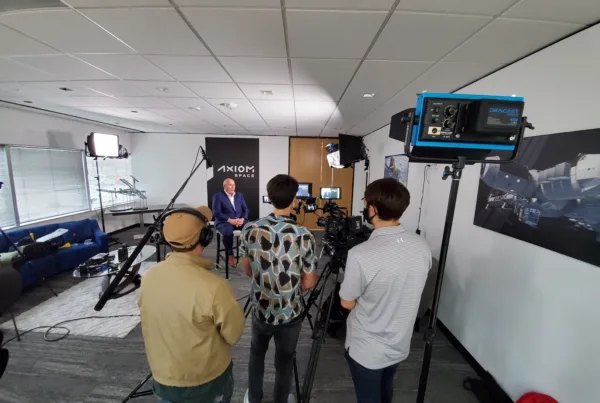Introduction
In today’s fast-paced corporate world, effective communication is key. One of the most impactful ways to convey information to your team is through corporate video production, especially for training and safety purposes. This article will guide you through the essential steps involved in the video production process, to create a compelling corporate video, from pre-production to measuring its success.
Pre-Production: The First Step in the Video Production Process
Concept Development: Before you even pick up a camera, it’s crucial to have a clear concept. What is the objective of your video? Whether it’s for training or safety protocols, a well-defined concept will guide every subsequent step.
Budgeting: Setting a budget is vital. Consider factors like equipment, talent, and post-production costs. A well-planned budget ensures a smooth production process without unexpected expenses.
Scriptwriting: A script serves as the backbone of your video. It outlines the dialogue, visual elements, and the flow of the video, ensuring that the final product aligns with your initial concept.
Production: The Core of the Video Production Process
Location Scouting: The right location sets the tone for your video. Whether it’s an on-site location or a studio, ensure it aligns with the video’s objectives.
Casting: Talent selection is more than just finding a pretty face; it’s about finding individuals who can effectively convey your message. This is particularly important for training and safety videos where clarity is crucial.
Filming: This is where the magic happens in the video production process. With a well-prepared script, budget, and location, the filming process becomes a matter of executing your plan effectively.
Post-Production: Bringing it All Together
Editing: Editing is not just about cutting and splicing; it’s about storytelling. A well-edited video keeps the audience engaged and conveys the message effectively. Learn more about editing here.
Color correction and grading: After filming, all of the final selects for the edit will need to be corrected using tools like exposure, white balance, and tint. They will also need to be color graded if they were shot using SLOG or similar technology. LOG allows the camera to absorb a wider array of information for the colorist to work with in post – leading to tighter control of the final image. Learn more about color here.
Sound Design: Good audio is often overlooked but is essential. Whether it’s the spoken word or background music, sound plays a crucial role in enhancing the video’s impact. Learn more about the sound mixing process here.
Graphics and Animation: These elements can make complex topics easier to understand, especially in training and safety videos. They can illustrate points that are hard to convey through live-action scenes alone.
Distribution: Getting your work out there
Internal Platforms: Unlike commercial videos, corporate training and safety videos often find their home on internal platforms. Make sure the video is easily accessible to all employees, whether it’s through an intranet or a secure video-sharing platform.
External Hosting: If you’re posting this content to social media, we recommend uploading the video natively to the channel. Alternatives we recommend might include hosting on YouTube for a wide audience, or platforms like Wistia for a limited audience.
Accessibility: Ensure that your video is accessible to everyone, including those with disabilities. Adding features like subtitles can make a significant difference.
Measuring Success: How to Evaluate Your Video Production Process
Success in corporate videos is often measured differently. For training and safety videos, KPIs could include decreased workplace accidents or increased compliance with safety protocols. Monitoring these metrics will give you valuable insights into the video’s effectiveness.
Conclusion
Corporate video production is a multifaceted process that requires careful planning and execution. Whether you’re creating a training video or a safety guide, each step is crucial to producing a video that not only engages but also educates. If you’re looking to create impactful corporate videos, Illuminate Video is here to help. Contact us today to discuss your needs.









